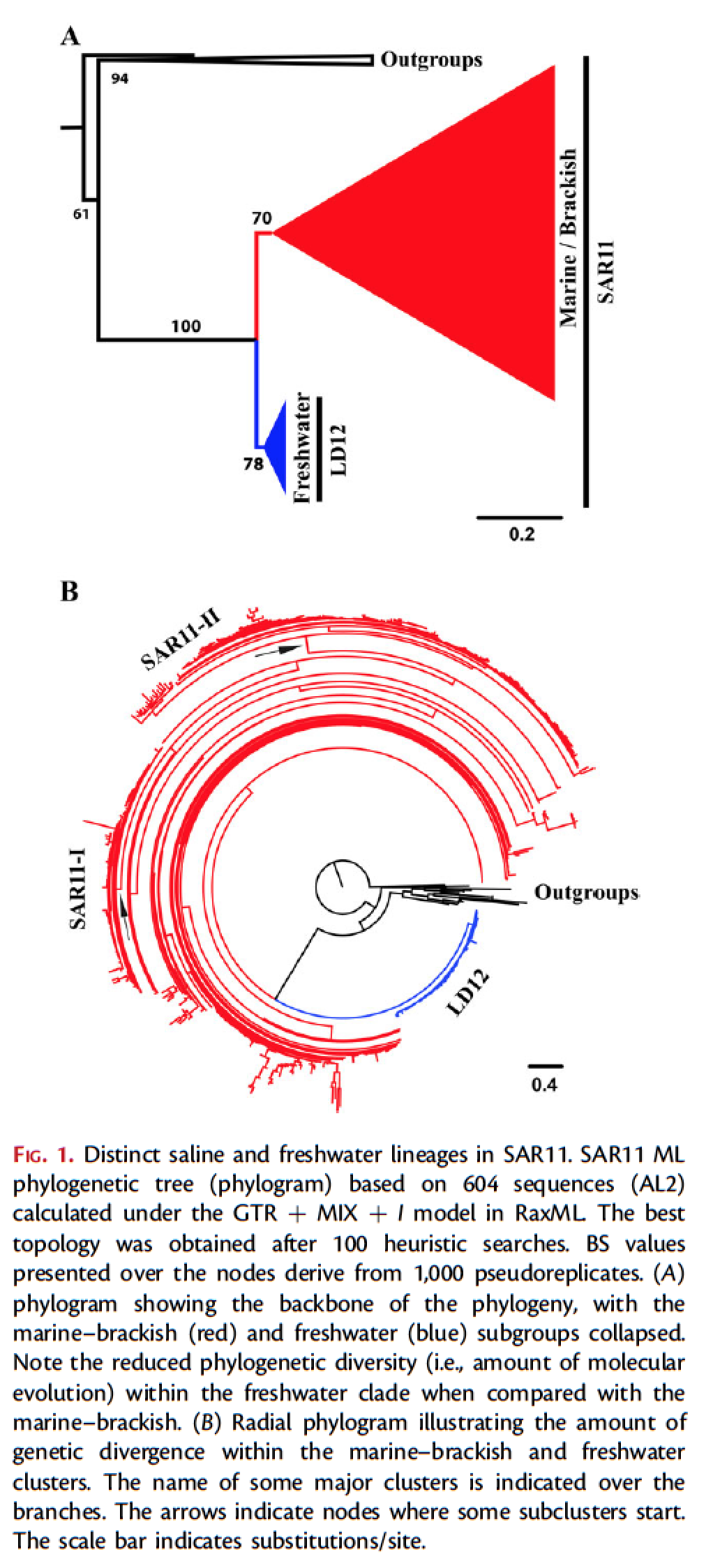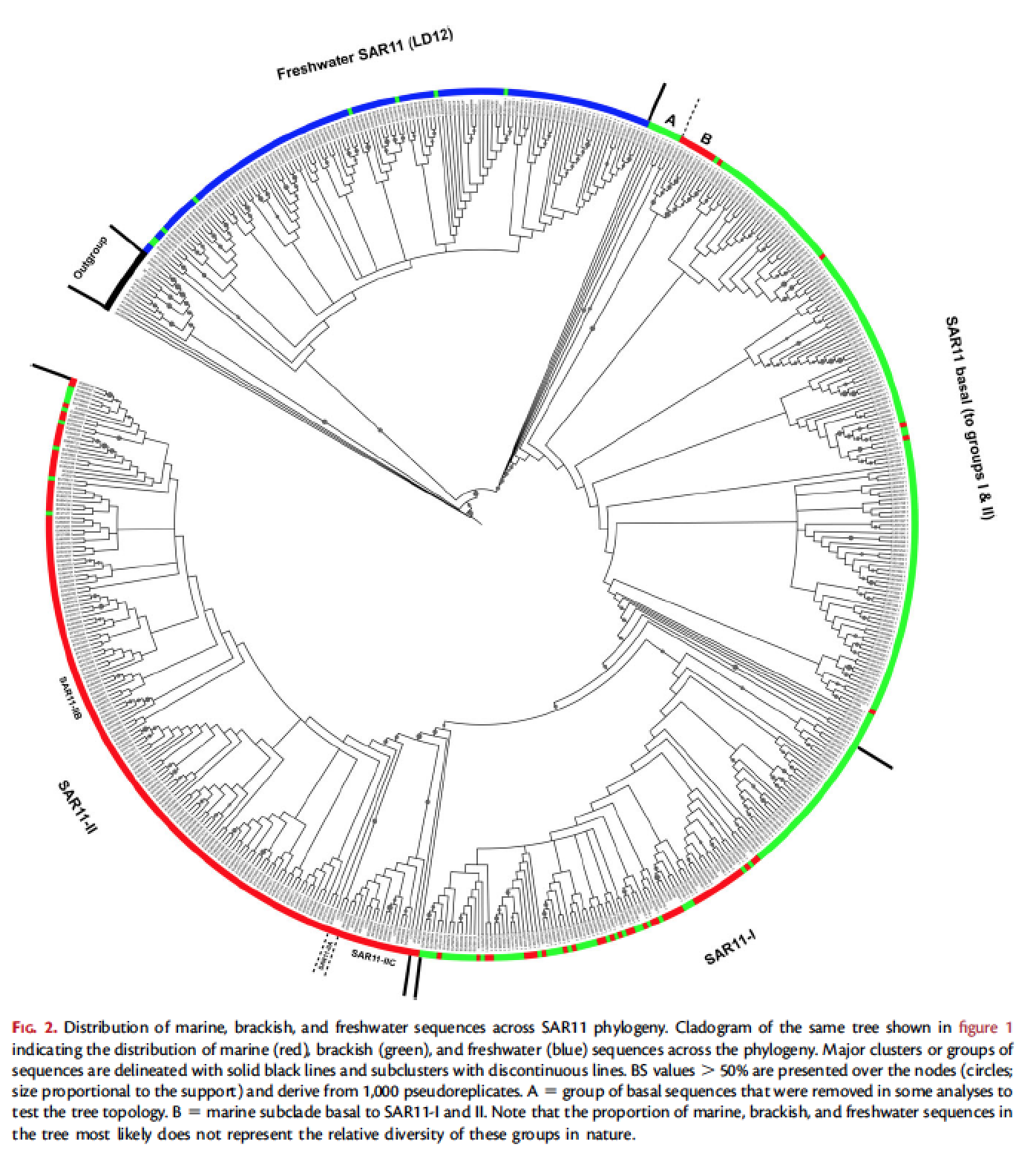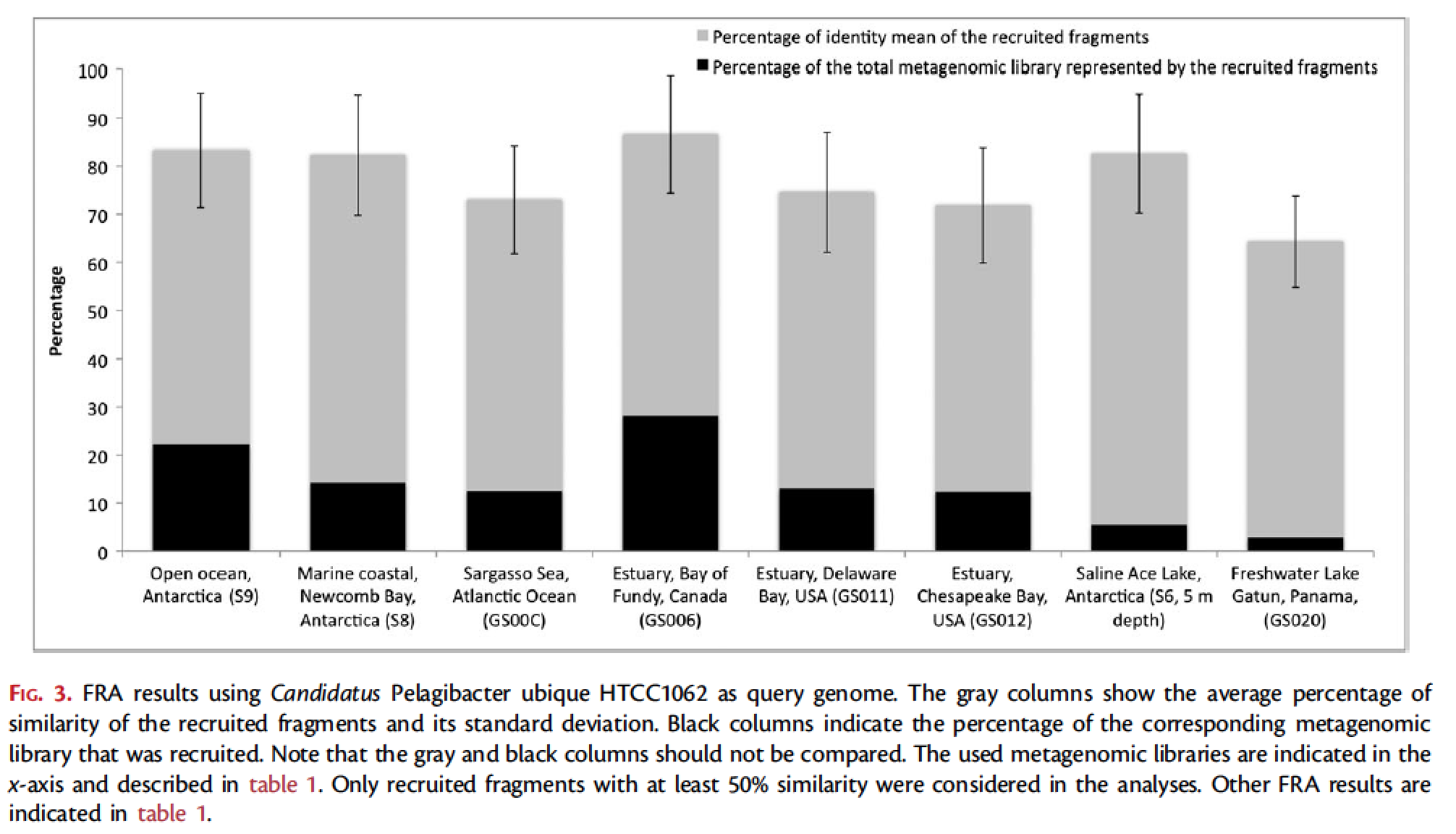Infrequent Transitions between Saline and Fresh Waters in One of the Most Abundant Microbial Lineages (SAR11)
Logares, R., Bråte, J., Heinrich, F., Shalchian-Tabrizi, K. and Bertilsson, S. 2010. Molecular Biology and Evolution. 27(2):347-357. doi:10.1093/molbev/msp239



Abstract
The aquatic bacterial group SAR11 is one of the most abundant organisms on Earth, with an estimated global population size of 2.4 x 10(28) cells in the oceans. Members of SAR11 have also been detected in brackish and fresh waters, but the evolutionary relationships between the species present in the different environments have been ambiguous. In particular, it was not clear how frequently this lineage has crossed the saline-freshwater boundary during its evolutionary diversification. Due to the huge population size of SAR11 and the potential of microbes for long-distance dispersal, we hypothesized that environmental transitions could have occurred repeatedly during the evolutionary diversification of this group. Here, we have constructed extensive 16S rDNA-based molecular phylogenies and undertaken metagenomic data analyses to assess the frequency of saline-freshwater transitions in SAR11 and to investigate the evolutionary implications of this process. Our analyses indicated that very few saline-freshwater transitions occurred during the evolutionary diversification of SAR11, generating genetically distinct saline and freshwater lineages that do not appear to exchange genes extensively via horizontal gene transfer. In contrast to lineages from saline environments, extant freshwater taxa from diverse, and sometimes distant, geographic locations were very closely related. This points to a rapid diversification and dispersal in fresh waters or to slower evolutionary rates in fresh water SAR11 when compared with marine counterparts. In addition, the colonization of both saline and fresh waters appears to have occurred early in the evolution of SAR11. We conclude that the different biogeochemical conditions that prevail in saline and fresh waters have likely prevented the environmental transitions in SAR11, promoting the evolution of clearly distinct lineages in each environment.